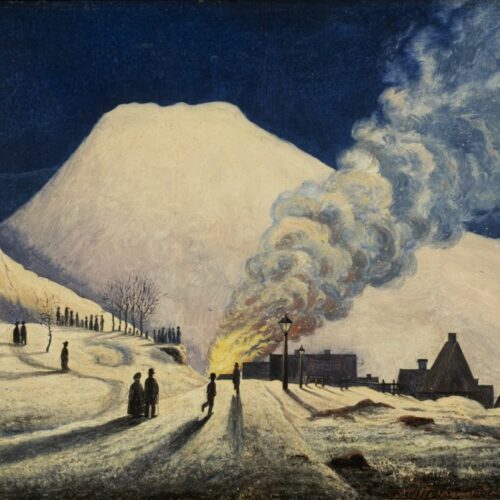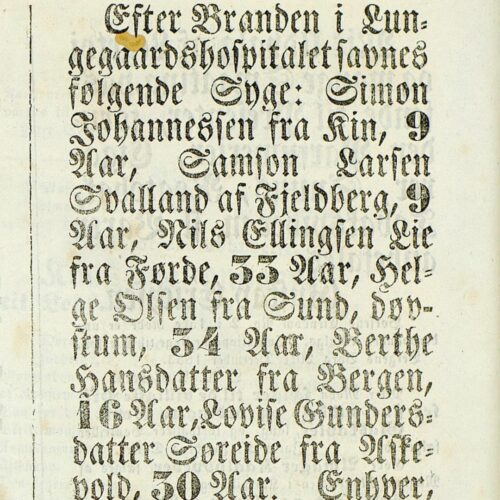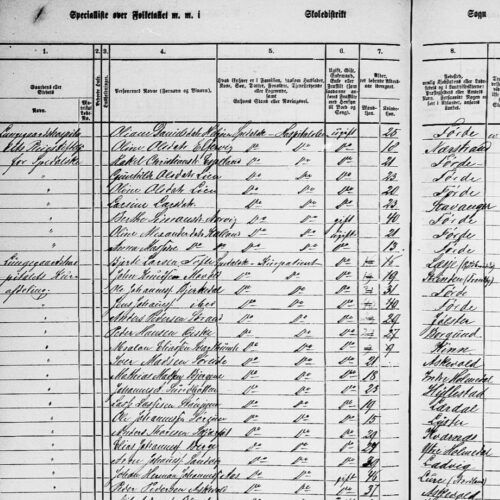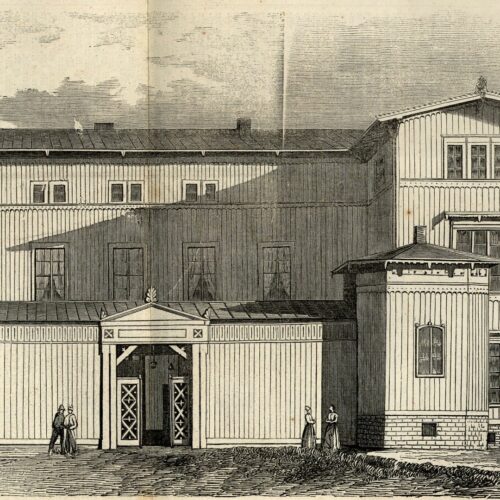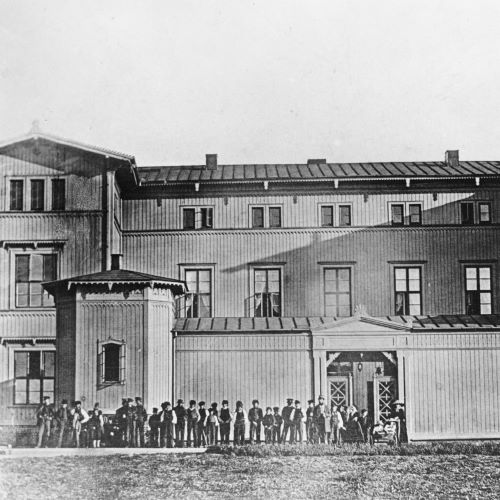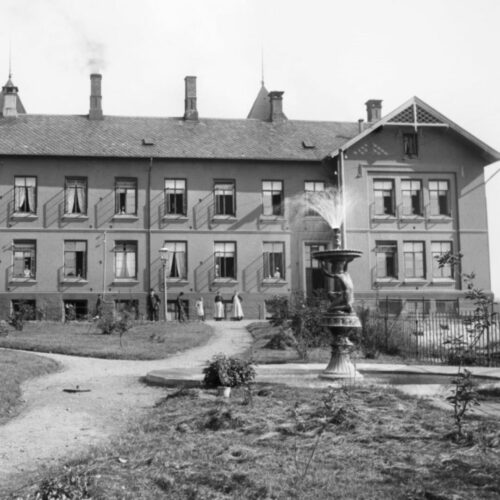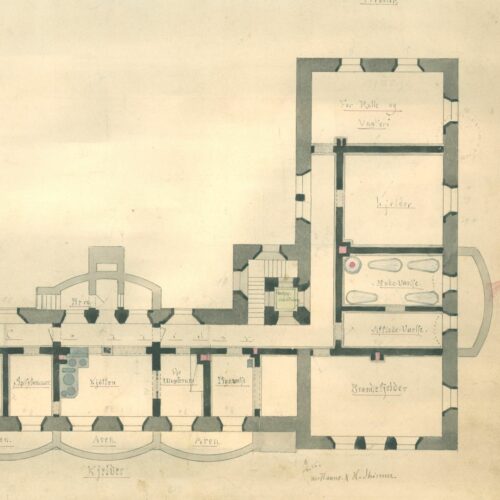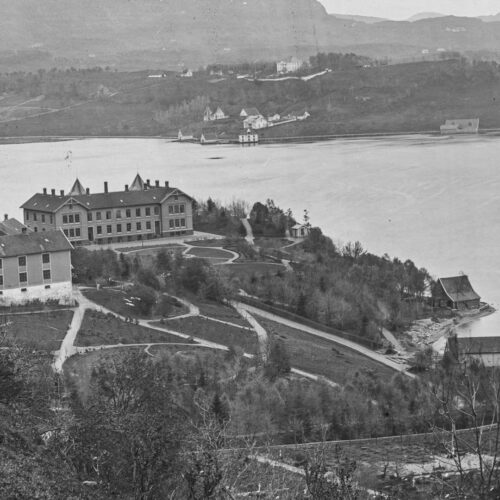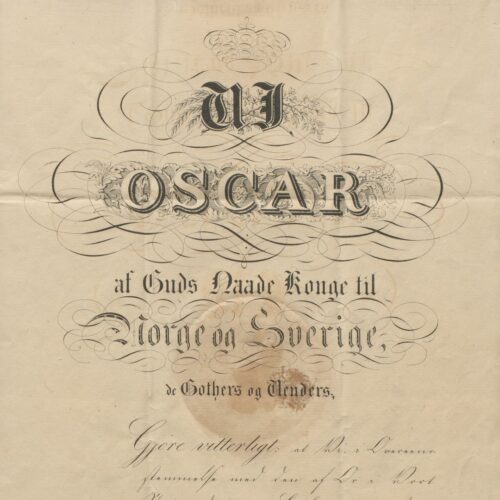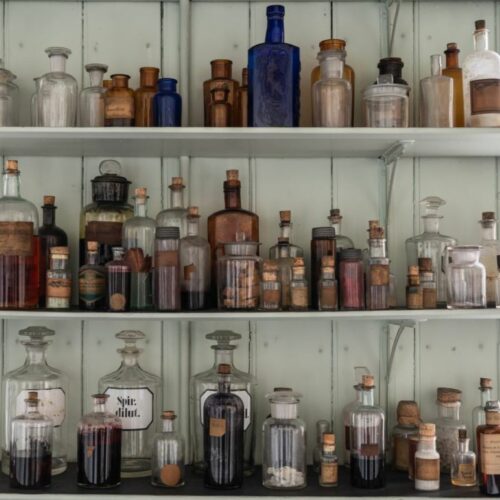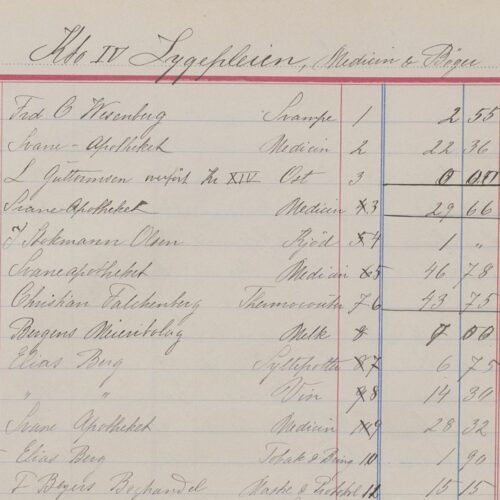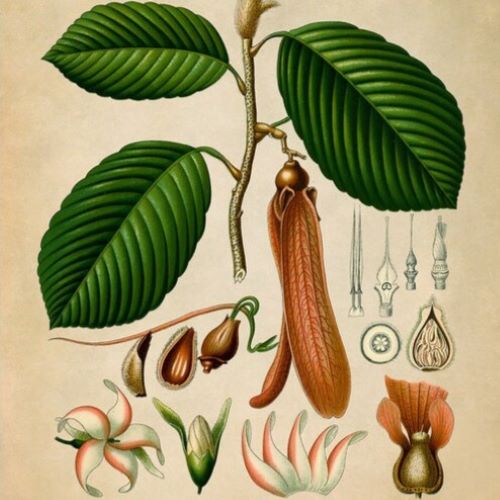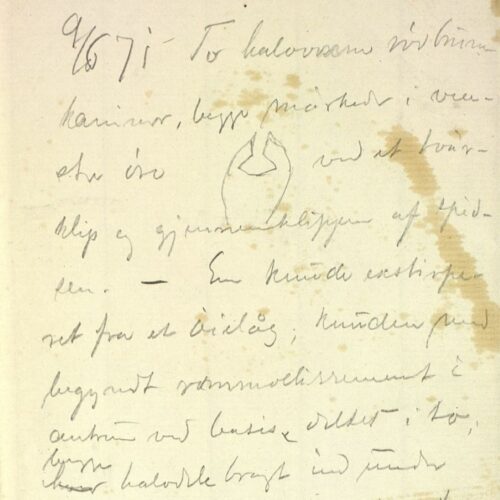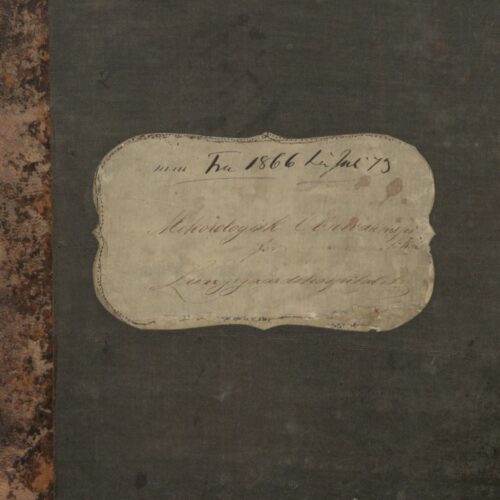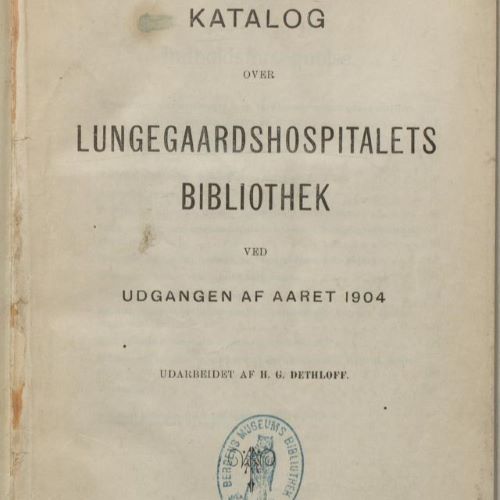Lungegård Hospital
Lungegård Hospital is perhaps the least known of Bergen’s three leprosy hospitals, although it was probably in its laboratory that Gerhard Armauer Hansen discovered the leprosy bacteria on a February evening in 1873. The hospital opened in October 1849 and was in use as a leprosy hospital until 1895. Most of its patients had leprosy, but the hospital also admitted patients with various skin diseases.
The hospital originally accommodated 60 people with leprosy and 20 people with other skin diseases, mainly syphilis. The hospital’s activities were gradually split into a curative ward and a care ward. The number of patients with other illnesses also gradually decreased, both because they didn’t want to be hospitalised with leprosy patients, and because many of the leprosy patients didn’t want to be housed with syphilis patients.
The hospital’s address was Kalfarveien 33, situated on a hilltop at Seiersbjerget, not far from Pleiestiftelsen Hospital, which was built some time later. It was part of the farm Lungegården that was purchased to build the hospital, and the hospital’s grounds extended all the way down to the waterfront of Store Lungegårdsvann bay.
The buildings
Lungegård Hospital was built at Kalfaret, not far from the city gate. The first hospital building was made of wood and burned down just a few years after it opened, and a new brick building was taken into use at the end of the 1850s. In addition to the large hospital building, there was a building at the rear that housed a steam bath and mortuary. There was also a separate bathhouse used for bathing in Store Lungegårdsvann bay. In addition, there was a separate house for staff.
The buildings were used as a leprosy hospital until 1895, when the last 39 patients were transferred to Pleiestiftelsen Hospital. Two years later, the buildings were sold to the City of Bergen. The hospital was first used as an epidemic hospital, and from 1912 it was used as a tuberculosis hospital and was part of the new Haukeland Hospital. When the area used by the railway was being expanded in 1953, the old hospital building was demolished and the hilltop on which it stood flattened. Therefore, no traces of Lungegård Hospital remain today.
A research hospital
Lungegård Hospital was the first of a new group of institutions that were built to enable Norway to gain control over the spread of leprosy, and it was the first state institution for leprosy. The hospital was to be both a sanatorium and a research institution.
A committee appointed in 1837 by the Norwegian Parliament, the Storting, to investigate the leprosy situation in Norway proposed building sanitoriums and care institutions in Bergen, Molde, Bodø and Tromsø. This proved to be too expensive, so the committee proposed a more gradual development, and the decision was made in the early 1840s to build a sanatorium in Bergen: Lungegård Hospital. A few years later, the first of the planned care institutions was built: Pleiestiftelsen No. 1 in Bergen. The care institutions were for those who were too sick to be healed.
It may seem strange to establish a hospital for the treatment of leprosy patients, when we now know that a cure for the disease did not come until much later. At the time, however, numerous doctors, both in Norway and abroad, believed that patients could recover if they were treated early enough. Various treatments were tested, and the doctors were in regular contact and exchanged experiences with colleagues in other countries.
The first head physician at the hospital was Daniel Cornelius Danielssen, who was at that time a physician at St. Jørgen’s Hospital. He was to become one of the leading researchers on leprosy, both in Norway and internationally.
Application of gurjan oil
This is perhaps the most peculiar of all the treatments Danielssen describes. It was recommended by a Dr Dougall, and nine men were selected to trial the treatment, which involved them lubricating each other with oil for four hours each day in a locked room kept at 26–28°C.

